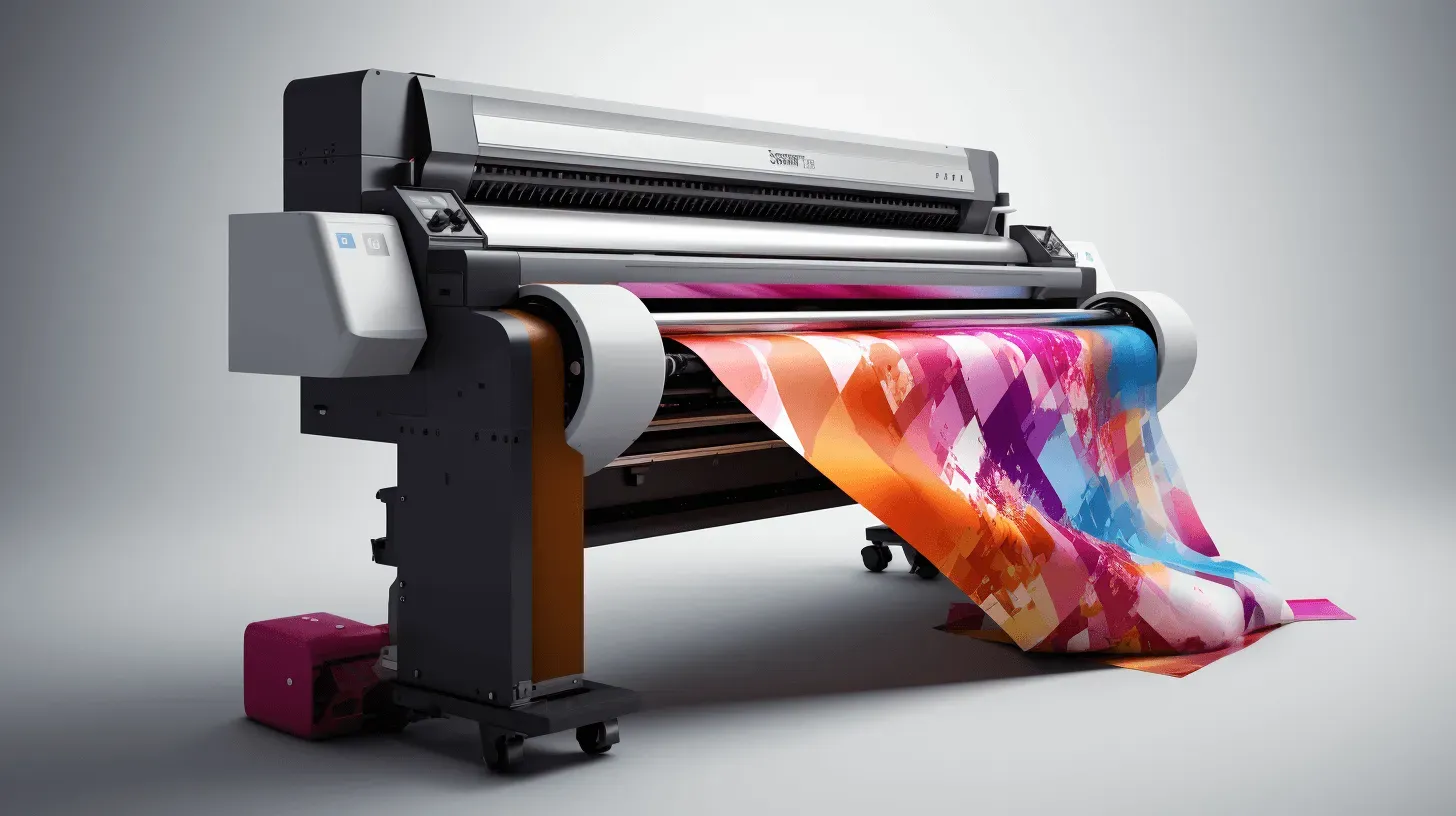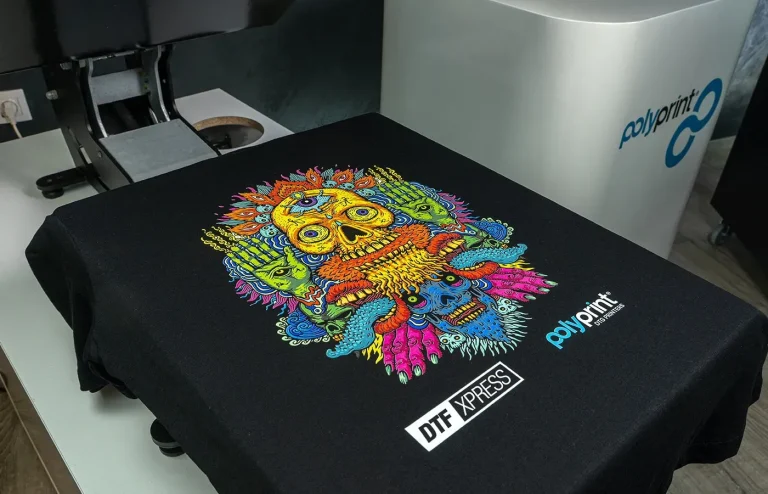DTF Printing: Revolutionizing the Printing Industry Today
DTF printing, also known as Direct-to-Film printing, is rapidly emerging as a transformative technology in the printing industry. This innovative approach allows for the seamless transfer of high-quality designs onto a variety of materials, making it ideal for custom apparel. The versatility and efficiency that DTF printing offers are revolutionizing garment printing, providing businesses with the tools to meet the rising demand for personalized products. As the printing industry evolves, understanding how DTF technology can enhance quality and streamline production is essential for companies looking to stay competitive. Join us as we delve deeper into the remarkable advantages and implications of DTF printing and its impact on the world of custom designs.
Direct-to-Film printing, often referred to in the industry simply as DTF, presents a pioneering method for transferring designs onto textiles and other surfaces. This cutting-edge printing technology utilizes a unique film process, creating vibrant and durable prints that cater to the booming market for custom apparel. As garment printing continues to evolve, alternatives like DTF are gaining traction due to their efficiency and quality. This method offers an exciting solution for businesses aiming to navigate the complexities of the modern printing industry while meeting consumer demands for tailored, high-quality products. Explore the spectrum of advancements that DTF brings to the table, reshaping how we approach textile design.
Advantages of Direct-to-Film Printing
Direct-to-Film (DTF) printing offers several advantages that are transforming the garment printing industry. One of the most significant benefits is its exceptional quality output. With vibrant colors and detailed designs, DTF printing provides results comparable to, if not exceeding, traditional methods. This level of accuracy ensures that brands maintain their aesthetic integrity, making it an excellent choice for custom apparel that needs to stand out in a competitive market.
Furthermore, DTF printing excels in its durability. The prints produced through this method resist fading and cracking over time. This longevity is particularly critical for companies that produce wearables, as customers expect their apparel to maintain quality after multiple washes. By investing in DTF technology, businesses not only enhance their product offerings but also cater to the growing consumer demand for high-quality apparel.
The Versatility of DTF Printing in Custom Apparel
One of the most remarkable aspects of DTF printing is its versatility across a range of materials. Whether working with cotton, polyester, or blends, DTF technology adapts seamlessly, making it suitable for various products. This flexibility allows businesses in the printing industry to expand their product lines, offering everything from custom t-shirts to bags, and even home decor items. As a result, brands can cater to diverse customer needs and capitalize on emerging trends in the market.
In addition to its material versatility, the DTF printing process is efficient for both small and large production runs. This is particularly beneficial for custom apparel businesses looking to create personalized items quickly and effectively. As e-commerce continues to thrive, the demand for unique and tailored merchandise grows, positioning DTF as a significant player in meeting these needs without the delays typically associated with traditional printing methods.
Eco-Friendly Practices in DTF Printing
Sustainability is a growing concern within the printing industry, and DTF printing answers this call with its eco-friendly approach. Unlike traditional methods that often waste ink and materials, DTF printing generates minimal waste, allowing businesses to recycle unused ink. This practice significantly reduces the environmental impact of printing operations, aligning with the values of environmentally-conscious consumers.
Moreover, by embracing DTF printing technology, companies can market themselves as sustainable brands, attracting a larger customer base. In today’s market, where environmental responsibility is increasingly prioritized, adopting eco-friendly printing practices can enhance brand loyalty and customer satisfaction while ensuring compliance with evolving regulations.
Emerging Market Trends in DTF Printing
The market for DTF printing is rapidly expanding, projected to reach significant milestones in the coming years. Analysts predict that the global market will grow substantially due to rising consumer demands for custom apparel, especially in sectors driven by e-commerce. As businesses pivot to online models, they require efficient and high-quality printing solutions that DTF provides.
Additionally, technological advancements play a pivotal role in this growth. Innovations in printer technology are not only improving the efficiency of DTF printing but also enhancing the quality of outputs. These factors collectively make DTF an attractive option for print shops and apparel businesses looking to stay relevant in a competitive environment that demands both quality and customization.
DTF Printing’s Impact on Small Businesses
As DTF printing continues to gain traction, it is proving to be a game-changer for small and medium-sized print shops. Many of these businesses leverage the technology to offer high-quality and customizable products at competitive prices. This democratization of printing technology enables startups to enter the market with innovative designs and personalized offerings, positioning them as credible competitors against established brands.
The ability to produce personalized merchandise efficiently represents a significant advantage for small businesses. As consumer trends lean towards unique and tailored products, DTF printing allows these businesses to meet customer demands without incurring the costs associated with large-scale production capabilities. This adaptability is crucial for their growth and sustainability in the evolving printing landscape.
Challenges and Considerations in DTF Printing Adoption
While DTF printing offers numerous benefits, potential adopters must also consider the associated challenges. Initial investment costs for high-quality printing equipment can be a significant barrier for some businesses. Additionally, sourcing the right materials and maintaining the necessary inventory can strain resources, especially for startups that are just beginning to navigate the printing industry.
Moreover, specialized training is often required to operate DTF printers effectively. Ensuring staff is skilled in handling the technology is essential for achieving optimal results. As competition in the DTF printing market increases, businesses must continuously innovate and improve their processes to maintain an edge, making training and development a critical component of sustainable growth.
Frequently Asked Questions
What is DTF printing and how does it work?
DTF printing, or Direct-to-Film printing, is a revolutionary printing technology that uses special inks printed onto a PET film. The printed film is coated with a heat-activated adhesive powder, cured, and then transferred onto various materials through heat press. This method allows for high-quality, durable prints on custom apparel and other fabrics.
What are the advantages of using DTF printing for custom apparel?
DTF printing offers numerous advantages for custom apparel, including exceptional color accuracy and durability. The prints resist fading and cracking, ensuring longevity. Additionally, it works on a variety of materials, making it versatile for different garment types while being environmentally friendly by minimizing waste.
Can DTF printing be used on any fabric?
Yes, DTF printing can be used on a wide range of fabrics, including cotton, polyester, nylon, and various blends. This flexibility makes it an ideal choice for garment printing, allowing businesses to create custom apparel for diverse products such as t-shirts, hoodies, and bags.
Why is DTF printing considered an eco-friendly printing technology?
DTF printing is considered eco-friendly because it generates minimal waste. Unused ink can often be reused, which contributes to sustainable printing practices. As consumers increasingly demand environmentally responsible options, this aspect of DTF printing makes it more appealing in the printing industry.
How is DTF printing transforming the small business landscape?
DTF printing is transforming the small business landscape by allowing startups to produce high-quality custom apparel at lower costs. This technology enables small print shops to compete with established brands by offering personalized products, catering to the growing market for customized merchandise.
What challenges do businesses face when adopting DTF printing technology?
While DTF printing has many benefits, businesses may face challenges such as high upfront investment costs for quality printers and materials, the need for specialized skills and training to operate the machinery effectively, and increasing competition as the technology becomes more widely adopted.
| Key Aspects | Details |
|---|---|
| Understanding DTF Printing | DTF printing is a process involving printing special ink onto a PET film, coated with adhesive powder, and then heat pressed onto materials. |
| Key Benefits | 1. Exceptional Quality: Vibrant colors, intricate details, and soft hand feel. 2. Versatility: Can print on cotton, polyester, nylon, and blends. 3. Eco-Friendly: Minimal waste and reusable ink. 4. Increased Efficiency: Quick production ideal for custom orders. |
| Market Trends | DTF printing market expected to reach $1.2 billion by 2027, driven by e-commerce and technology innovations. |
| Applications | Customization of apparel and home decor; significant adoption among small to medium-sized print shops. |
| Challenges | Initial investment costs, need for specialized skills, and competition as technology spreads. |
Summary
DTF printing is revolutionizing the printing industry by providing exceptional quality, versatility, and efficiency for a range of materials. As technology advances, this innovative process is making a significant impact in the marketplace, particularly for custom merchandise. Businesses embracing DTF printing can create vibrant and durable products that meet growing consumer demands for personalization. Moreover, with the market projected to grow substantially in the coming years, companies have lucrative opportunities to capitalize on this trend. Therefore, understanding DTF printing and its benefits can be a game changer for entrepreneurs and established businesses striving for success in an increasingly competitive landscape.






